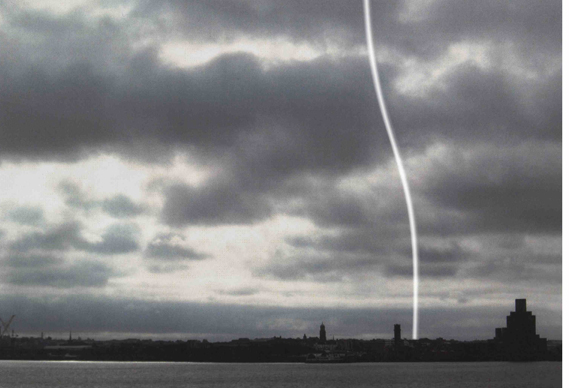Tuesday, March 15. 2011
Personal comment:
Could we consider to extend museums into outer or deep space?
We know that there are some art programs with the Nasa and the European Space Agency, but there are no permanent exhibition structures into space at the moment! (a memorial on the Moon possibly) ... Maybe one part of the Space Station could become an extension of the global Guggenheim ... Guggenheim Space ;) ... or maybe something more interesting!
Monday, March 07. 2011
Via Le territoire des sens
-----
by noreply@blogger.com (AADB)

Daniel Arsham, Pixel Cloud, 2010
Daniel Arsham, Pixel Cloud, 2010
Via Jargon, etc.
-----
by noreply@blogger.com (Gabriel Cuéllar)
Personal comment:
It's funny because I was there in the same exhibition just two weeks ago, and I have the feeling that this is Philippe Rahm on the left of the third picture. I don't know though, I just speculate as I know that Gabriel is working with Philippe.
So, places and special interests connect (or sort of mediate the relation of) people through time... in an unconscious manner. A social software like Foursquare tries to connect people according to locations, through time. It's interesting but a major part seems to miss: the reason why you came somewhere, which is what "connects" the people (beside to have a drink, eat in an italian or chinese or to buy a product like what Foursquare seems to be about) and allows the specific place/event to eventually become a "psychic time machine", a "telepathic connector".
Via BLDGBLOG
-----
by noreply@blogger.com (Geoff Manaugh)
 [Image: "Whirlpool" (1973) by Dennis Oppenheim]. [Image: "Whirlpool" (1973) by Dennis Oppenheim].
Artist Dennis Oppenheim's " Whirlpool" project, from the summer of 1973, sought to create an artificial tornado on the bed of a dry desert lake in Southern California. It was intended as a "3/4 mile by 4 mile schemata of tornado," the above image explains, "traced in [the] sky using standard white smoke discharge from aircraft."
As the Telegraph describes it:
Employing one of [Oppenheim's] characteristic quasi-scientific methods, the piece was created by issuing radio instructions to an aircraft which discharged a liquid nitrogen vapor trail. The aircraft began by flying in revolutions measuring three quarters of a mile in diameter. Subsequently the pilot was instructed to repeat this manoeuver but, with each revolution, he was made to reduce the size of the diameter of the circle and lose height—and it is no mean feat controlling a plane according to these specifications. The operation had to be repeated three times before the desired whirlpool effect was achieved.
In a short story called "The Cloud-Sculptors of Coral D," J.G. Ballard envisions a tropical atoll where the residents have learned to "sculpt" clouds in the sky, listening to Wagner over loud speakers and using specially engineered gliders and flying techniques.
"Lifted on the shoulders of the air above the crown of Coral D," Ballard writes, "we would carve seahorses and unicorns, the portraits of presidents and film stars, lizards and exotic birds. As the crowd watched from their cars, a cool rain would fall on to the dusty roofs, weeping from the sculptured clouds as they sailed across the desert floor towards the sun."
They are part aesthetic object, part weather system.
 [Image: "Column" by Anthony McCall, courtesy of Creative Review]. [Image: "Column" by Anthony McCall, courtesy of Creative Review].
Both of these came to mind this weekend when I read that artist Anthony McCall is planning to create something called "Column" in Liverpool, to coincide with the London 2012 Olympics. It will be "a spinning column of cloud a mile high," as Creative Review describes it, "visible across the North West region throughout the Olympic year."
Made of cloud and mist, this "swirling micro-climate" will be "created by gently rotating the water on the surface of the Mersey and then adding heat which will make it lift into the air like a water spout or dust devil."
We'll have to see how it actually works out, of course, but the idea that cities might soon deploy large-scale specialty weather-effects—that is, permanent climatological megastructures—instead of, say, Taj Mahals or Guggenheim Bilbaos as a way of differentiating themselves from their urban competition is a compelling one.
The future weather-architects of 2050 A.D. In-house climatologists spinning noctilucent clouds above Manhattan.
Personal comment:
Some comments and additionnal references by Geoff Manaugh about McCall's "Column" project.
Friday, March 04. 2011
Via Creative Review
-----
by Patrick Burgoyne

Artist Anthony McCall has unveiled plans to create a spinning column of cloud a mile high on Merseyside next year as part of the Cultural Olympiad for 2012
McCall's Column will be sited at Wirral Waters in Merseyside and be visible across the North West region throughout the Olympic year. It was commissioned by Arts Council England as part of Artists taking the lead, a series of 12 public art commissions across the UK to celebrate the London 2012 Cultural Olympiad.
Apparently, a “coherent convection” of cloud and mist, will be created by gently rotating the water on the surface of the Mersey and then adding heat which will make it lift into the air like a water spout or dust devil (see here).
A scale model of the installation is on show at McCall's current London show.
Personal comment:
Anthony McCall strikes back! I really wonder if this will work (and if it will look like the picture...), but it's a quite beautiful project nonetheless.
|









 [Image: "
[Image: " [Image: "Column" by Anthony McCall, courtesy of
[Image: "Column" by Anthony McCall, courtesy of 
